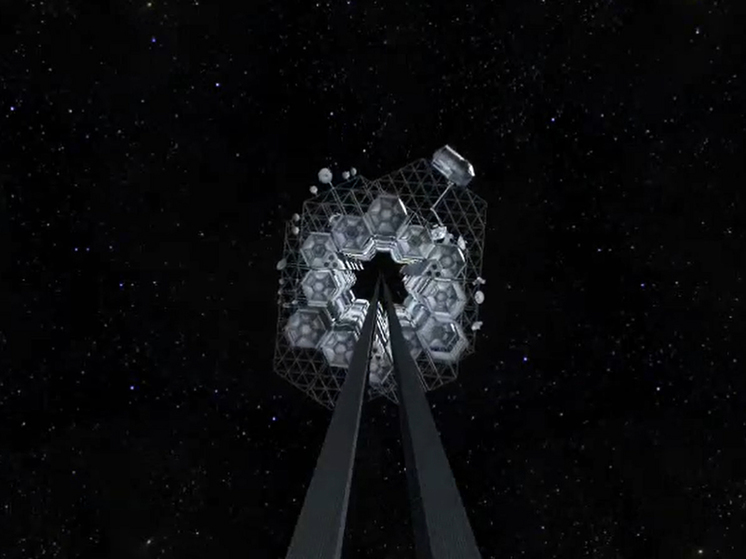Technology Will Speed Up Colonization of Other Planets
Imagine a long cable connecting Earth to space that could take us into orbit for a small fee and deliver us to other worlds at record speeds. That's the basic idea behind a space elevator. It would cost $100 billion to build, but it would also present enormous technological and organizational challenges.

Instead of six to eight months to get to Mars, according to scientists, a space elevator can deliver a person there in three to four months or even 40 days.
The concept of space elevators is not new, but designing such a structure would not be easy, and many other problems besides technological ones stand in the way.
That is why serious plans to create such an elevator have appeared relatively recently. Japanese company Obayashi Corporation believes it has the experience.
Known for building the world's tallest tower, Tokyo Skytree, Obayashi Corporation announced in 2012 that it would reach even greater heights with its own space elevator. In a report that same year, the company said it would begin construction on the $100 billion project by 2025 and could begin operations as early as 2050.
Technology development officer Yoji Ishikawa has now said that the company, likely won't begin construction until 2025, it is currently «engaged in research and development, preliminary design, partnerships and promotion.»
Some doubt that such a structure is even possible.
«It was kind of a crazy idea, — noted Christian Johnson. — However, there are people who are real scientists who are really interested in this and really want to make it a reality.»
Launching people and objects into space on rockets is extremely expensive. For example, NASA estimated that the four Artemis missions to the Moon will cost $4.1 billion per launch.
The reason is the so-called rocket equation. It takes a lot of fuel to get to space, but it's heavy, which increases the amount of fuel needed.
«So you see a kind of vicious circle,&rdash; concludes Johnson.
According to some projects, space elevators could carry cargo into orbit using electromagnetic vehicles called «climbers.» They could be remotely powered, such as by solar energy or microwaves, eliminating the need for on-board fuel.
In his report to the Obayashi Corporation, Ishikawa emphasized that this type of space elevator could help reduce the cost of cargo delivery to space up to $57 per pound. Other estimates place the cost of space elevators as a whole at $227 per pound.
Even SpaceX's Falcon 9 rocket, which costs about $1,227 per pound and is one of the cheapest to launch, is still about five times more expensive than higher cost estimates for space elevators.
By According to Johnson, there is no danger of a rocket explosion, and the climbers can be zero-emission vehicles. At a relatively leisurely speed of 200 kilometers per hour, Obayashi Corporation climbers will move slower than rockets with less vibration, which is good for sensitive equipment.
Ishikawa recalled that Obayashi Corporation views the space elevator as a new form of public works that will benefit all of humanity. Currently, one of the biggest obstacles to building a space elevator is what to make the cable or tube out of.
To withstand the enormous stress it is subjected to, the pipe must be very thick if it is made from conventional materials such as steel. However, «if you tried to make it from steel, you would need more steel than exists on Earth.»
Ishikawa's report suggests that the Obayashi Corporation may use carbon nanotubes. Nanotube — it is a rolled up layer of graphite, a material used in pencils. Compared to steel, it is much lighter and less likely to break when stretched, so the space elevator could be much smaller, Johnson said. But there is one catch.
Although nanotubes are very strong, they are also tiny — one billionth of a meter in diameter. And the researchers didn't make them very long.
According to Ishikawa's report, to be properly balanced and still remain in geosynchronous orbit, where objects are in sync with the Earth's rotation, the tether would need to be at least 321,000 kilometers long. .
Whatever the material turns out to be, other problems still remain. For example, a space elevator cable would be under such incredible tension that it could burst. A lightning strike can cause it to evaporate. There are other weather factors to consider, such as tornadoes, monsoons and hurricanes.
Many hurdles must be overcome to begin construction by 2050, especially since Ishikawa estimates construction will take 25 years . He noted that the forecast for 2050 has always been accompanied by reservations regarding the development of technology.
“This is not our goal or promise,” — he said, but the company is still committed to that date.

























































Свежие комментарии